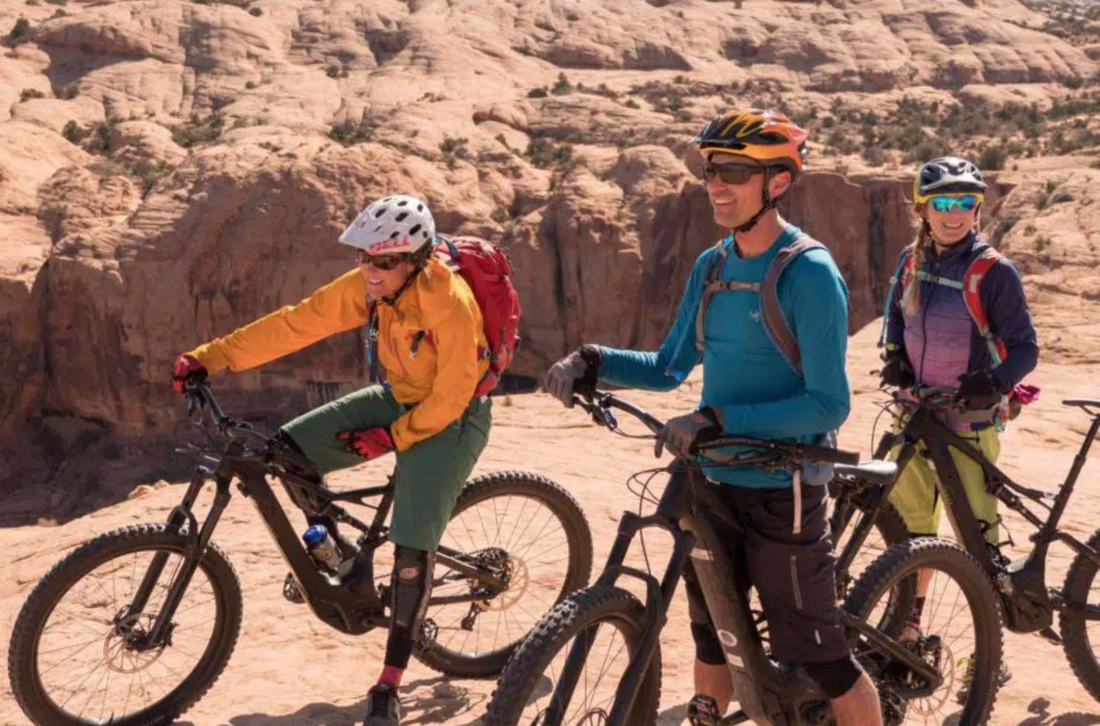May 24, 2022
- By Kurt Repanshek
While the National Park Service failed three years ago to carefully study the potential impact of e-Bike use in the National Park System, a federal judge did not block their use but simply directed the agency to take "a hard look" at positive and negative impacts.
U.S. District Judge Rudolph Contreras's ruling was a qualified victory for Public Employees For Environmental Responsibility, which had sought to have the decision that allowed e-Bikes to travel on trails and roads used by muscle-powered bikes tossed out.
In his 54-page ruling handed down Tuesday, the judge held that the Park Service acted in an arbitrary and capricious manner in 2019 when P. Daniel Smith, the acting director of the Park Service, issued a directive ordering parks to treat e-Bikes "used for transportation and recreation in a similar manner to traditional bicycles" without requiring either an environmental assessment or more strenuous environmental impact statement examining any natural resource impacts from the decision.
"The Smith Directive attempted to avoid conducting any environmental analysis because the park units would do so, and the park units in turn largely declined to conduct additional analysis because the Smith Directive had already suggested that the change was minimal," Judge Contreras wrote.
While the Park Service would later implement a Final Rule formalizing the Smith Directive with some changes, the judge said that the Final Rule, by failing to require either an EA or EIS, "commits the classic NEPA error of considering only the effects of what a policy actually, directly authorizes rather than the reasonably foreseeable impacts of a policy."
The Park Service, Judge Contreras added, "appears to have 'simply assumed there were [no impacts] because the Final Rule did not authorize any impacts.'”
Furthermore, he wrote, the National Environmental Policy Act "is not just a box that must be checked at some point in an agency process, it is a crucial information-forcing statute designed 'to provide for informed decision making and foster excellent action.'”
While the Park Service maintained in the court's consideration of the matter that the final e-Bike rule "does not establish a precedent for future action," the court strongly disagreed, finding that "the [Final] Rule established a framework that could and foreseeably would be relied on for future action. And regardless, even if the Rule did not set a past precedent for expanded e-bike use, the Smith Directive surely did."
At the end of the day, the judge said he could not toss out the Smith Directive, as it had already been superseded by the Final Rule on e-Bike use in the National Park System.
As for the Final Rule, Judge Contreras wrote that "the record already suggests that there will likely be both positive and negative impacts of e-Bikes. The agency is required to take a hard look at them, and that analysis could potentially alter the outcome of the Final Rule, but there is 'at least a serious possibility that [NPS] will be able to substantiate its decision on remand.' Nor does NPS’s error necessarily require that NPS prepare a full EIS as opposed to some other form of NEPA compliance. On remand, the agency will need to determine the proper level of NEPA compliance for the Final Rule, adequately document its reasoning, and provide opportunity for public input as appropriate."
“The fact that the National Park Service sought to avoid studying the impact on park resources and visitors before opening trails to e-Bikes speaks volumes about the agency’s environmental decision making,” said PEER Executive Director Tim Whitehouse in reacting to the court's ruling. “In essence, the Park Service chose to leap before it looked.”
Click here to see the complete article in the National Parks Traveler.

 RSS Feed
RSS Feed